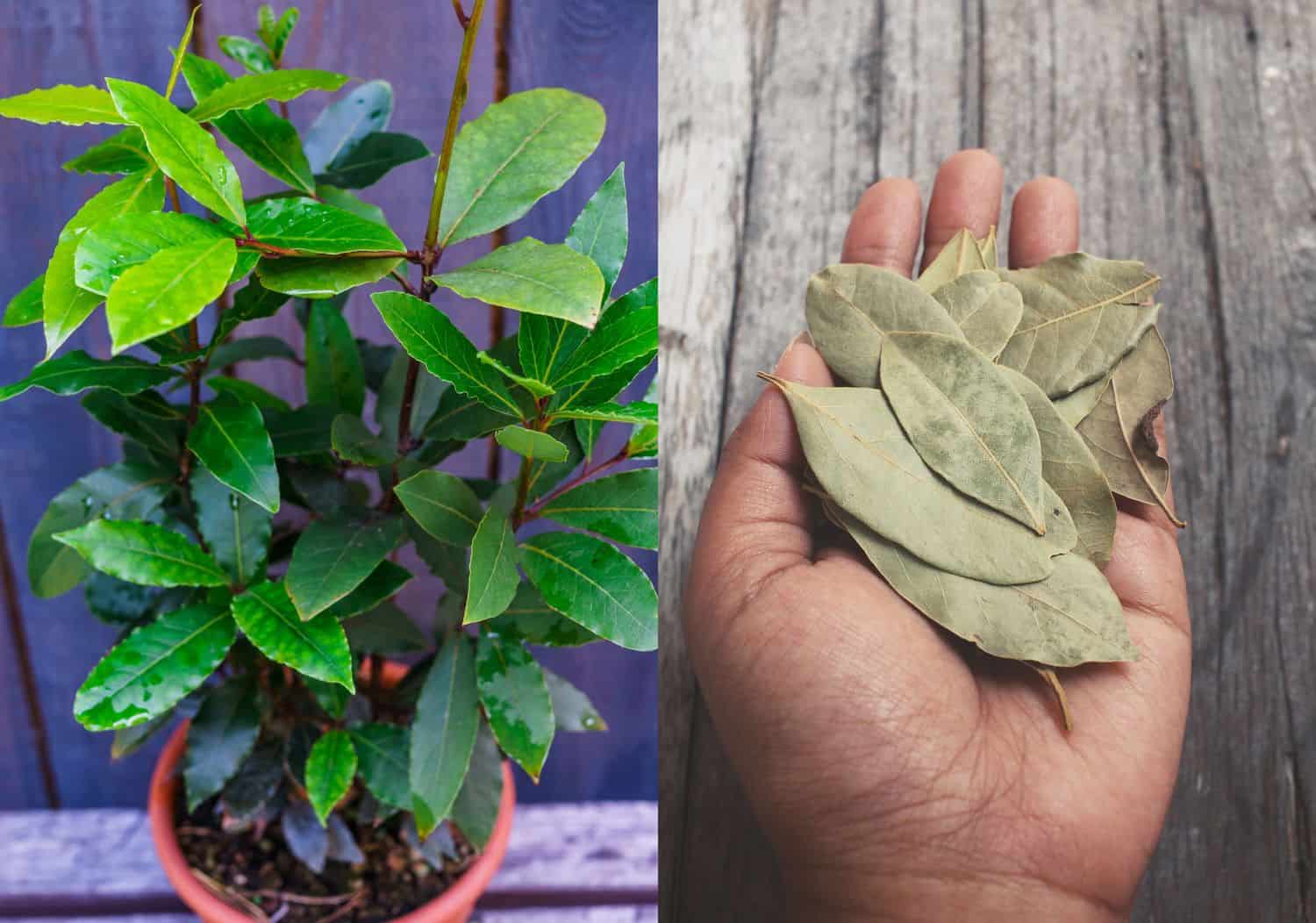Bay leaf plants (Laurus nobilis) are a versatile herb that add flavor to many savory dishes. Growing bay leaf plants at home allows you to have a fresh supply of aromatic leaves to use in your cooking. Proper fertilization is key to keeping your bay leaf plant healthy and productive. Here is a guide to fertilizing bay leaf plants covering the dos and don’ts.
The Dos of Fertilizing Bay Leaf Plants
Use Organic Fertilizer
Organic fertilizers are the best choice for fertilizing bay leaf plants. Organic fertilizers like compost blood meal bone meal, fish emulsion, and worm castings slowly release nutrients into the soil. This provides a steady supply of nitrogen, phosphorus, and potassium that bay leaf plants need to thrive.
Organic fertilizer also enriches the soil with beneficial microbes that help plants absorb nutrients. Chemical fertilizers can disrupt soil biology and even burn bay leaf plant roots if over-applied.
Fertilize During the Growing Season
Bay leaf plants grow actively during the spring through fall seasons Fertilize bay leaf plants every 4-6 weeks during this growing period This provides nutrients when the plant needs them most to support new growth.
Bay leaf plants go dormant in winter, so fertilizer applied at this time may simply leach away unused by the plant. It’s best to avoid fertilizing in winter.
Follow Label Instructions
When using any fertilizer, it’s important to follow the instructions on the packaging. Applying too much fertilizer can burn bay leaf plant roots and leaves. Start with half-strength doses if uncertain and increase slowly as needed.
Water After Fertilizing
Always water bay leaf plants after applying fertilizer. This helps bring fertilizer nutrients down into the soil where roots can access them. Dry fertilizer on leaves can burn the foliage.
The Don’ts of Fertilizing Bay Leaf Plants
Don’t Use Quick-Release Fertilizer
While tempting for their immediate effects, quick-release chemical fertilizers are not the best choice for bay leaf plants. These water-soluble mixes provide an influx of nutrients that can overfeed and even burn bay leaf plants.
Slow-release organic fertilizers are safer and provide a measured supply of nutrients over time. If using quick-release fertilizer, use even less than the recommended dose.
Don’t Fertilize Too Often
It’s easy to over-fertilize bay leaf plants with quick-release or excessive applications of any fertilizer. This risks fertilizer burn and buildup of excess salts in the soil that can damage roots.
Stick to fertilizing only 2-3 times within the growing season. Rely on slow-release organic sources that won’t overload the soil with nutrients.
Avoid Fertilizing in Winter
Bay leaf plants go dormant in winter, halting their growth. Fertilizer applied at this time is unlikely to be used by the plant and may simply leash away. Wait until signs of spring growth emerge before resuming fertilizer.
Don’t Get Fertilizer on Leaves
Dry fertilizer left on bay leaf plant foliage can easily burn the leaves, creating unsightly brown patches. Always water immediately after applying any fertilizer to wash residues off the leaves.
Scatter or work granular fertilizer into the soil around drip lines rather than sprinkling over the entire plant. Never apply liquid fertilizer to leaves.
Key Takeaways on Fertilizing Bay Leaf Plants
- Use organic slow-release fertilizer to avoid overfeeding bay leaf plants.
- Fertilize every 4-6 weeks during active growing seasons of spring through fall.
- Always follow label directions carefully to avoid fertilizer burn.
- Water after applying fertilizer to bring nutrients into soil.
- Avoid quick-release chemical fertilizers that deliver excessive nutrients.
- Don’t fertilize during winter dormancy as nutrients may simply leach away.
- Keep fertilizer off leaves to prevent leaf burn.
With a little care and restraint in fertilizing, your bay leaf plant will be healthy and productive for years to come. Follow these dos and don’ts for best results!

Organic vs. Synthetic Fertilizers
Organic options, like fish emulsion or compost, release nutrients slowly and improve soil health over time. Theyre less likely to burn your plant but require patience. Synthetic fertilizers act fast, offering a quick fix, but can lead to salt buildup and root damage if not used judiciously.
- Enhance soil structure
- Release nutrients slowly
- Lower risk of over-fertilization
- Nutrient levels less precise
- Slower to show results
- Quick nutrient release
- Easy to control dosage
Timing Your Fertilization: Seasonal Guidelines
Bay Laurel thrives with consistent feeding during the spring and summer months. A balanced NPK fertilizer supports lush foliage and prepares the plant for robust growth. Start fertilizing in early spring as new growth appears, continuing through summer to sustain health and vitality.
How to Grow Bay Leaves (Bay Laurel) – Complete Growing Guide
FAQ
How to fertilize a bay leaf plant?
What is the best food for bay leaf trees?
Is Miracle Grow good for bay trees?
What is the best fertilizer for bay trees in pots?
